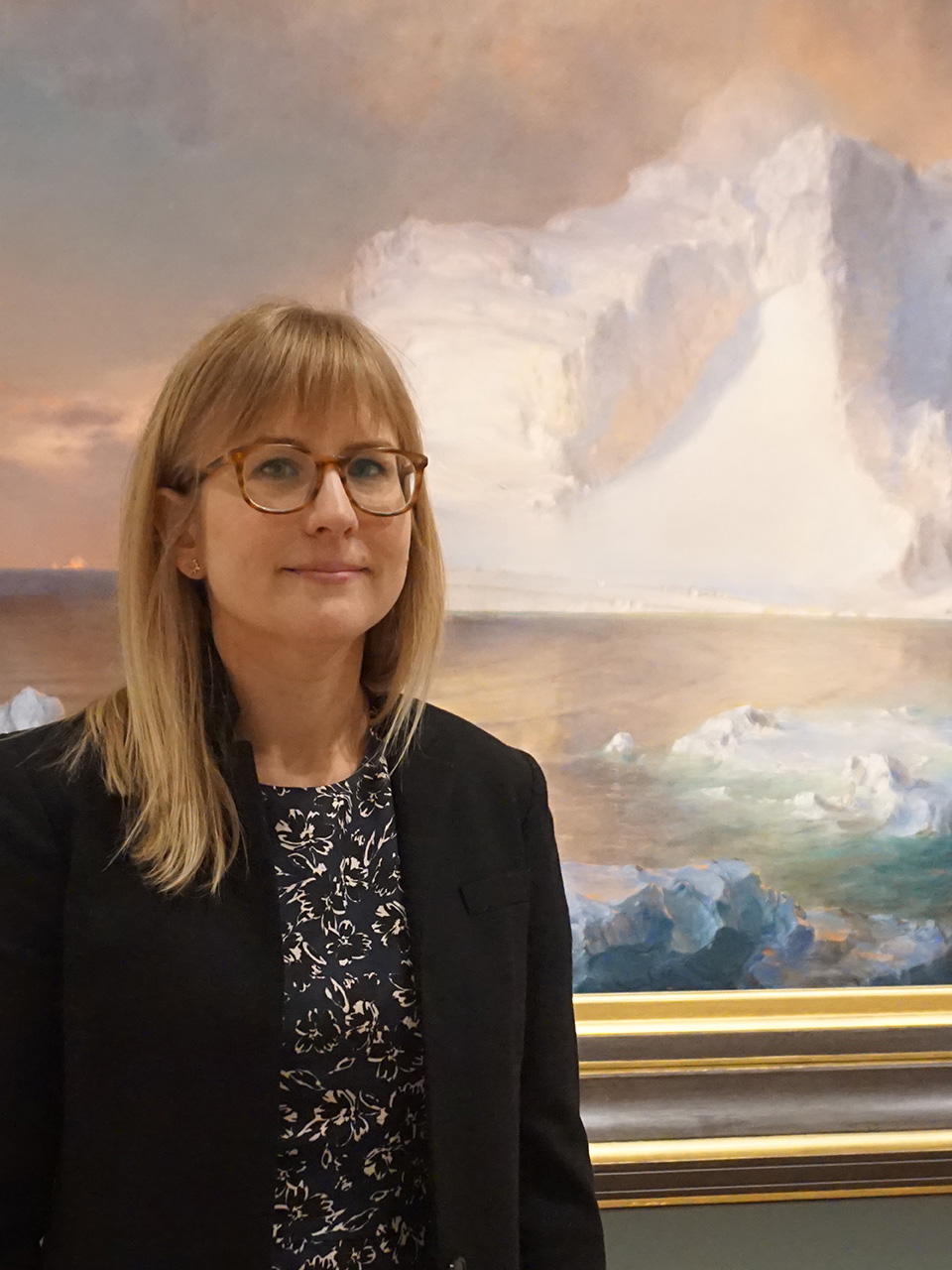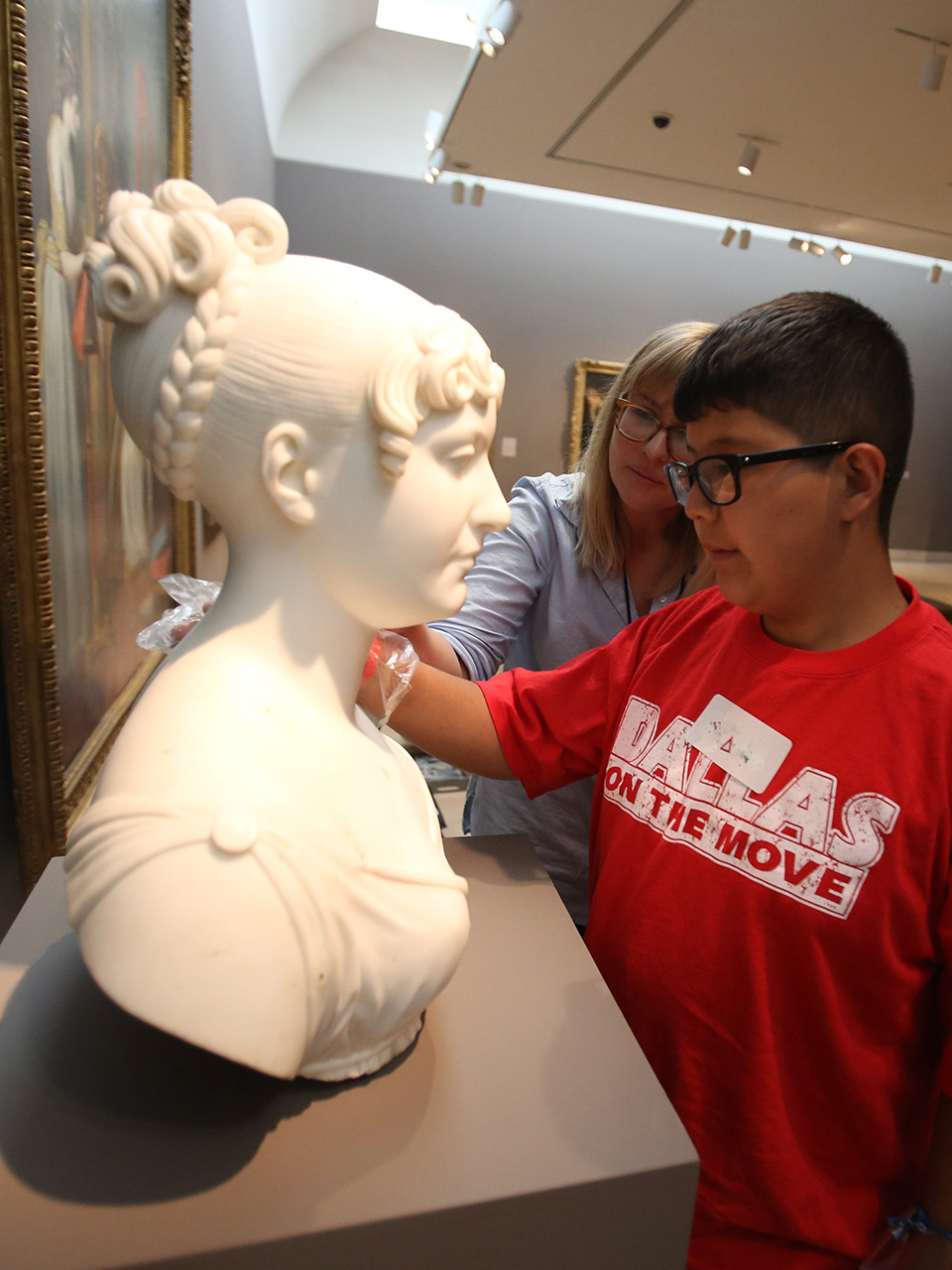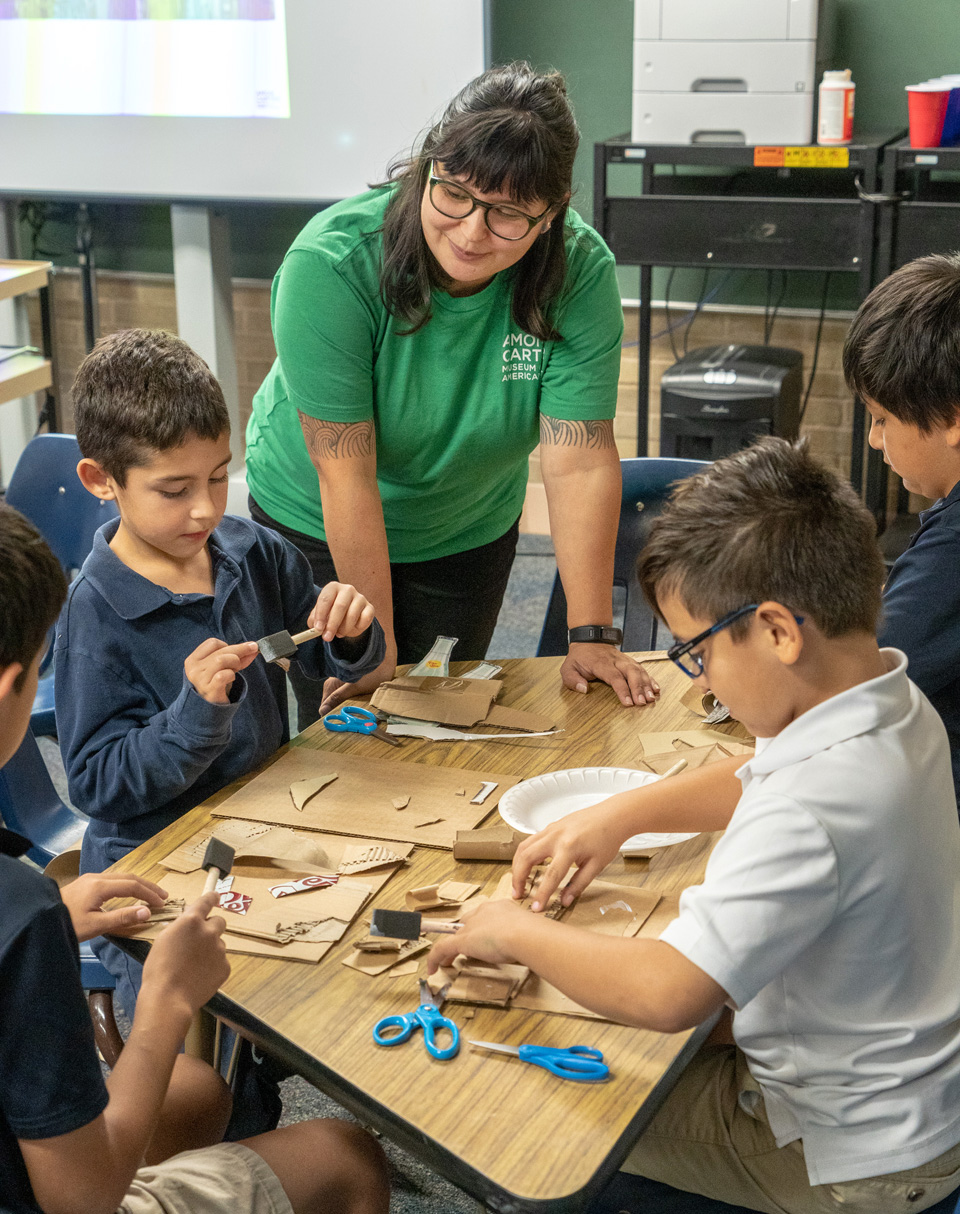Like Fuentes, Amanda Blake ('06 M.A.) wants to reach out to those who may not visit museums.
"Thinking outside the walls of the museum is important to us," she says.
As director of education and library services at Amon Carter since 2018, Blake provides
the leadership, strategic direction and vision for the museum’s education department
as well as its research library, both of which are fundamentals of the institution’s
mission.
During this time of renovation projects at the museum, Blake is making space for new
audiences and unexpected perspectives with a shift toward community and social practice.
“Embracing networks of people and new communities, enhancing collaboration, and advancing
empathy and creativity allow us to present the museum, its collection and its exhibitions
in a way that establishes dialogue and opportunities for creativity, reflection and
meaningful connections,” Blake says.
Blake and Madeline Fitzgerald ('13 M.A.), manager of adult programs, are retooling the museum’s offerings for adults
to connect with artwork in a fun way, geared to younger audiences. They also are expanding
programming for families at the museum.
Blake and Fuentes focus on specific zip codes, such as the Northside neighborhood
in Fort Worth, and attend festivals and other events to create awareness and introduce
new audiences to the museum.
Blake also is reaching out to another untapped audience -- medical professionals.
They’ve initiated a program with JPS Hospital, the Modern Art Museum and the Kimbell
Art Museum to strengthen the observation and communications skills of physicians,
nurses and hospital residents. The medical professionals participate in a variety
of gallery activities with works of art at all three Fort Worth art museums that are
designed for group engagement and discussion.
“A nurse may notice something a doctor wouldn’t, and being in a museum space together
can enhance group dynamics when the professionals are working together back at their
hospital,” Blake says.
Blake has relished seeing those “aha” moments throughout her career. After she graduated
from Oklahoma State University, she worked as the education project manager at the
Wichita Art Museum for a year and a half. While pursuing her graduate degree at UNT,
she interned at the Nasher Sculpture Center, then landed a job at the Dallas Museum
of Art after graduation in 2006. She started working with family programs and then
was head of family, access and school experiences.
It was during that time that she had one of her most rewarding experiences. She had
created the Meaningful Moments program for those with Alzheimer’s and their caregivers.
During one session, the group discussed a painting depicting an apple tree, and one
participant told his wife about an incident during his childhood -- an apple truck
turned over in his neighborhood, and the community made applesauce and apple pie from
the apples for an entire summer. His wife had never heard him speak about that in
their 50 years of marriage.
“Moments like this attest to the power of art, not only in sparking memories and creating
conversations, but in strengthening connections and social bonds,” Blake says. “That’s
why I love my job.”



